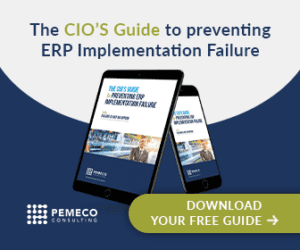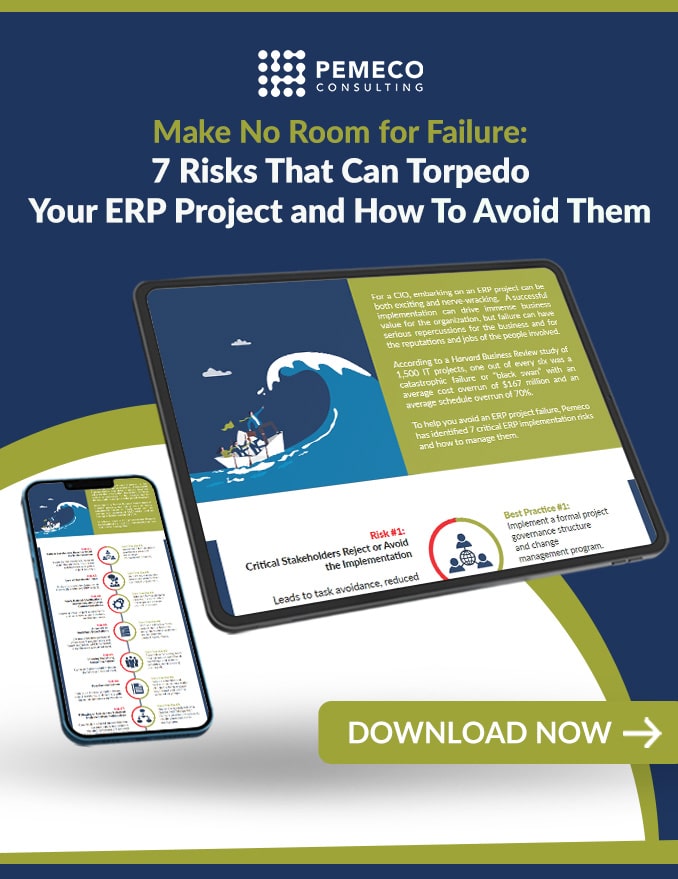Implementing an ERP system is a significant step for organizations of any size. An enterprise resource planning software is often critical for integrated business processing, including accounting, budgeting, order processing, inventory management, production, supply chain, and more. Given the size and risk profile of ERP implementation projects, it’s crucial that you follow ERP implementation best practices at every stage of the process to maximize your chances of delivering a successful ERP project and to realizing the projected business benefits.
The ERP implementation best practices discussed in this post cover key requirements. As you go through the checklist, you can be sure that the ERP implementation satisfies your business goals, reduces the risk of delays, and allow employees to use the system efficiently.
Establishing a Solid Project Team
You need a strong project team to handle an ERP implementation. This would typically include a project manager and representatives of key business groups. You also need an executive sponsor who knows to adjust business priorities and bring in additional resources when needed.
The team’s responsibilities include establishing goals, determining requirements and KPIs, performing daily project management, and ensuring that the project is completed on time and within the budget. Of course, the team is also expected to resolve conflicts that may arise between the groups in the organization.
Determining Key Requirements
In ERP projects, it’s crucial to establish requirements clearly, and they should be linked to your organization’s goals. Those might include automating processes to reduce expenses and save time or improve customer response.
This stage also includes the analysis of the current systems and workflows and other critical business processes. You have to determine precisely what it is you want to achieve and how every process can be improved. ERP implementation offers an opportunity to introduce an improved process instead of just automating an existing one that’s inefficient.
Identifying KPIs
You need to identify KPIs that will be the targets you use to measure the success of the ERP implementation. For instance, if you’re a manufacturing company, you might want to improve cycle time, inventory turns, and others. Your KPIs might include profit margins, total sales, average purchase value, and conversion rates if you’re a retailer.
Establishing Collaboration and Communication
Successful projects are built around your understanding of the goals you’ve set and the ERP implementation objectives. Everyone in the organization needs to be in sync. Everyone needs to understand clearly why the organization is implementing the ERP system, what it will do, what benefits are expected of it, and what to expect during its implementation.
Clear communication and collaboration are needed to build that understanding. The leaders should be involved to better highlight the importance of the project. Communication may incorporate the use of charts, graphs, and presentations, among others. There may be regular meetings and calls to ensure everything is working seamlessly, so problems will be identified and addressed early.
Performing Data Migration
One of the most critical steps in the ERP system implementation is the migration of data, and it needs careful preparation. As you know, there’s always a risk of losing data or corrupting them, so it has to be done correctly, especially if you’re trying to consolidate data from various sources and applications. One consideration should be whether you’re going to do the transfer manually or digitally. Both have their own set of pros and cons, so your organization should take time to weigh them before you decide.
Preparing to Provide Support
It can be exciting when the go-live date arrives. However, you must be sure that you’re also prepared to provide support because it’s likely that there will be some issues, especially in the beginning. There should be a technical support team. The project team should also be able to detect potential problems and address them.
Conclusion
ERP implementation is a huge undertaking, and its impact cannot be underestimated. That’s why it’s important to understand the best practices described above to ensure that you deliver your project successfully.
Pemeco Consulting specializes in ERP implementation services. We can help transform your organization and optimize your business processes and take your business to the next stage in your evolution. Contact our team today and find out what we can do for you!





